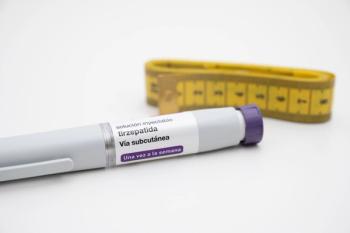Combining sodium glucose co-transporter 2 inhibitors (SGLT2is) with glucagon-like peptide-1 receptor agonists (GLP-1RAs) may offer additional protection against cardiovascular and kidney disease in patients with type 2 diabetes (T2D), according to the results of a new meta-analysis published in The Lancet Diabetes & Endocrinology1 and presented at the 61st European Renal Association Congress in Stockholm, Sweden.
Separately, SGLT2is and GLP-1RAs have demonstrated cardiovascular benefits. However, little clinical literature has focused on outcomes associated with using the medicines together. Due to the growing prevalence of GLP-1RAs in the diabetes and obesity landscape, accelerated by an increasing number of indications for the agent class, this is a crucial area for further study.
- Combination therapy with SGLT2is and GLP-1RAs offers additional protection against cardiovascular and kidney disease in patients with T2D.
- A meta-analysis found that SGLT2is combined with GLP-1RAs reduced the risk of chronic kidney disease progression by 33% and slowed the annual loss of kidney function by nearly 60%. This is particularly important because diabetes is the leading cause of chronic kidney disease.
- There were no additional safety concerns identified when using SGLT2is and GLP-1RAs together.
The SGLT2 Inhibitor Meta-analysis Cardio-Renal Trialists’ Consortium (SMART-C) is the largest assessment of outcomes for the combined therapeutic use of SGLT2is and GLP-1RAs. The study gathered data from 12 large-scale, placebo-controlled trials of SGLT2is involving 73,238 patients with diabetes. Of these, 3065 were already receiving GLP-1RAs.
Overall, SGLT2is lowered the risk of major adverse cardiovascular events by 11% and hospitalization for heart failure or cardiovascular death by 23% compared to placebo. Notably, this benefit was seen regardless of whether patients were also taking GLP-1RAs.
When used together with GLP-1RAs, SGLT2is reduced the risk of chronic kidney disease progression by 33% and slowed the annual loss of kidney function by nearly 60%.
The study found no additional safety concerns when SGLT2is were used in combination with GLP-1RAs.
READ MORE: Study Reveals Robust Benefits of Semaglutide in Protecting Against Kidney, CV Events in Patients With T2D
Current meta-analysis results build off positive results of the landmark FLOW trial (NCT03819153). Published earlier in May, results of the international, double-blind, randomized, placebo-controlled phase 3 trial spotlighted semaglutide’s effectiveness in lowering the risk of kidney failure, decelerating worsening kidney function, and protecting against the risk of cardiovascular events and death, in patients with T2D.2
“SGLT2 inhibitors have clear protective effects against heart failure and chronic kidney disease, while GLP-1 receptor agonists can reduce the risk of heart attack, stroke, and also kidney disease—as recently demonstrated in the landmark FLOW trial,” said Brendon Neuen, lead author, clinical associate professor, senior research fellow at The George Institute for Global Health, and director of kidney trials at Sydney’s Royal North Shore Hospital, in a news release.3 “Our findings support using this combination to further improve outcomes in patients with type 2 diabetes who meet guideline recommendations for both therapies.”
Elevated glucose from diabetes can damage blood vessels in the heart and kidneys, increasing the risk of cardiovascular and kidney disease. In fact, diabetes is the most common cause of chronic kidney disease.4
Moreover, estimates predicting that T2D prevalence will more than double in the next 30 years, surpassing 1 billion global cases by 2050, further strengthen the need for research into diabetes care.5 According to Neuen in an interview with Drug Topics conducted over email, the current study offers valuable insights for developing global treatment strategies for the condition.
"These findings, which represent the largest and most comprehensive evaluation of the combined use of SGLT2i and GLP-1RA, provides the clearest evidence yet that combined use of both medicines can further reduce cardiovascular and kidney disease," said Neuen. "We anticipate that these findings will inform how people with diabetes are treated worldwide, including influencing major clinical practice guidelines.
Although current results suggest that using SGLT2is and GLP-1RAs in tandem may offer robust protection against cardiovascular and kidney disease, further research is needed to fully understand the long-term effects of the combination therapy.
READ MORE: Diabetes Resource Center
Pharmacy practice is always changing. Stay ahead of the curve: Sign up for our free Drug Topics newsletter and get the latest drug information, industry trends, and patient care tips, straight to your inbox.
References
1. Apperloo E, Neuen BL et al. Efficacy and safety of sodium glucose co-transporter 2 inhibitors with and without glucagon-like peptide-1 receptor agonists: A SMART-C collaborative meta-analysis of randomised controlled trials. The Lancet. 2024. doi: 10.1016/S2213-8587(24)00183-9




























































































































































